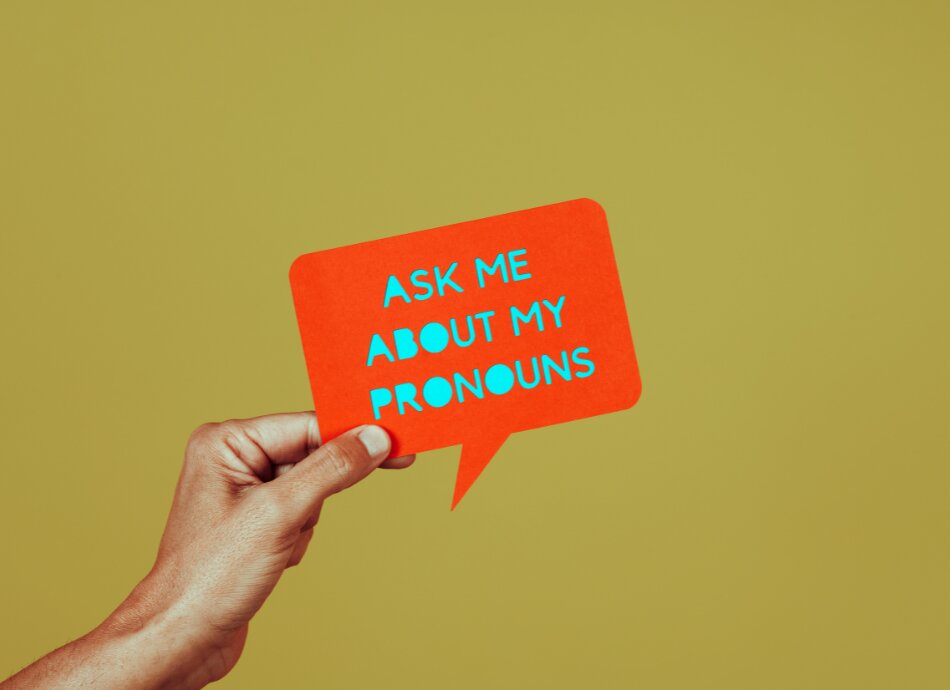Wishing everyone happy holidays and a joyful New Year from the Healthify team. Don't forget to Slip, Slop, Slap and Wrap!
Pronouns – what they are and why they matter
Key points about pronouns and why they matter
- Many people use pronouns every day without giving them much thought – but correct pronoun use matters a lot.
- Not everyone identifies as male or female, so using ‘he’ and ‘she’ can lead to false assumptions and mistakes.
- This can leave people being identified in the wrong way and result in them feeling excluded, misunderstood and potentially disrespected or demeaned.

Pronouns are a small set of words such as ‘I’, ‘you’, ‘he’ and ‘him’, ‘her’ that take the place of using a person’s name. For example, if you say “Joe saw Jill, and he waved at her”, the pronouns ‘he’ and ‘her’ take the place of ‘Joe’ and ‘Jill’, respectively.
In English, pronouns associate a person with a particular gender, eg, ‘he’ for males and ‘she’ for females (in te reo Māori all pronouns are gender neutral).
However, not everyone identifies as male or female, so using ‘he’ and ‘she’ can lead to false assumptions and mistakes. This can leave people being identified in the wrong way and result in them feeling excluded, misunderstood and potentially disrespected or demeaned.
Many trans and gender non-conforming people experience the repeated use of incorrect pronouns, which can be harmful to them. People who are gender neutral, non-binary or gender non-conforming may choose other pronouns such as ‘they’, ‘their’ and ‘them’.
Below are some tips for using pronouns.
1. State your pronoun
When you introduce yourself, state your pronoun (if you feel comfortable). This lets people know your preference and signals to them that they can, too.
2. Don’t force others
At the same time, don’t force or expect others to state their pronoun. If they don’t want to or don’t feel comfortable, then that’s their choice.
3. Use someone’s chosen pronoun
Once you know someone’s pronouns, start using them. Validate their identity and show respect by using their chosen pronouns.
4. Listen and learn
If you’re not sure what pronoun to use, listen to how others refer to the person. If you feel comfortable, you could politely and respectfully ask the person what their pronouns are.
5. Don’t make assumptions
Try not to make any assumptions about a person and what pronouns they might use. Stop and think before ‘assigning’ someone to a gender.
6. Mistakes do happen
If you make a mistake, apologise, correct yourself and move on. Don’t dwell on it as this may embarrass the person.
7. Stand up for others
If you witness someone using incorrect pronouns in relation to someone else, let them know what the correct pronouns are. This is especially important if it’s being done repeatedly or maliciously.
8. Email signature
Think about putting your pronouns underneath your name in your email signature(external link). This not only lets people know your pronouns, it also normalises it for everyone, and sends an inclusive signal to others.
Pronouns in the workplace(external link) Diversity Works NZ
References
- Pronouns in the workplace(external link) Diversity Works NZ
- Understanding gender diversity Healthify He Puna Waiora, NZ
- Gender-inclusive language(external link) Digital Government NZ
- Pronoun use in email signatures(external link) Te Kawa Mataaho, NZ
Credits: Healthify Editorial Team. Healthify is brought to you by Health Navigator Charitable Trust.
Page last updated:





